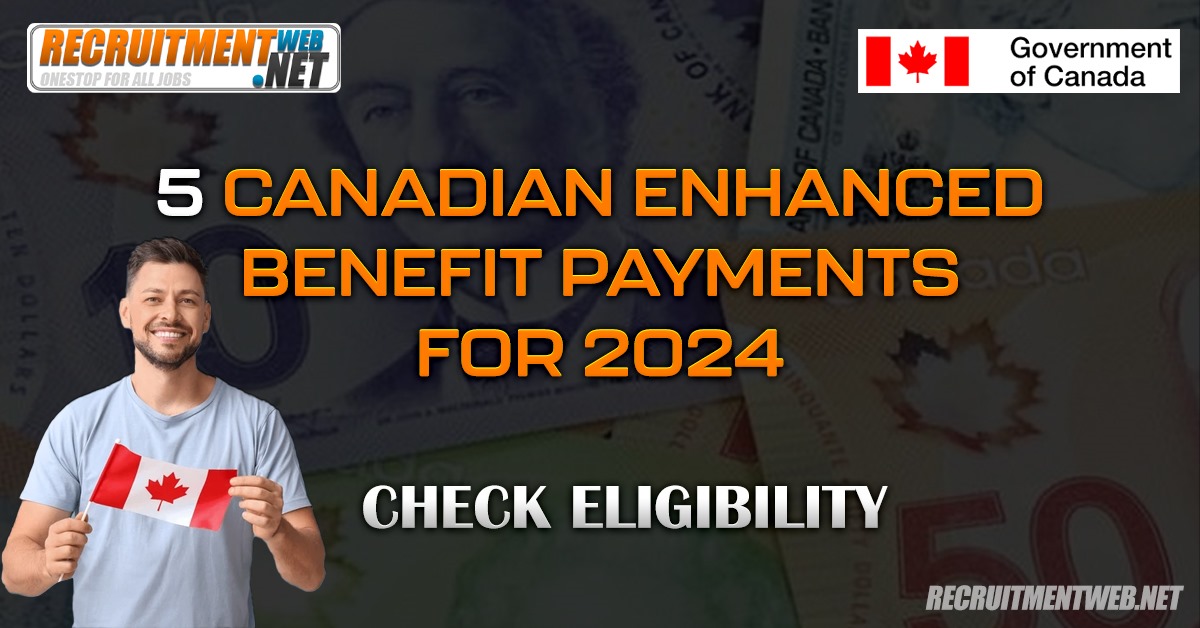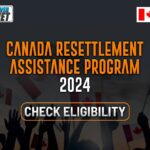Eligibility Criteria for 5 Canadian Enhanced Benefit Payments
5 Canadian Enhanced Benefit PaymentsTo qualify for the Canadian Enhanced Benefit Payments in 2024, you need to meet specific residency and income criteria. Additional considerations apply to families, students, and people with disabilities, aiming for inclusive financial support.

Determining Residency and Income Levels
You must be a Canadian resident to receive benefit payments. This is crucial for any benefits from the Canada Revenue Agency. If you’re a temporary worker or newcomer to Canada, different rules may apply. Checking specific guidelines is important.
Your net income level plays a key role. Single individuals and families have different income thresholds. Ensure your adjusted family net income meets the set limits to qualify for enhanced payments. Be sure to file your tax return, as eligibility often depends on this key step.
Special Considerations for Families, Students, and People With Disabilities
Families raising children, parents, and those in common-law relationships have specific benefits tailored to their needs. Family eligibility often depends on combined income, considering adjusted family net income levels.
If you are a student or have a disability, unique support structures can enhance your payments. Students may qualify if they meet income requirements, even if they’re part-time. People with disabilities can receive additional supplements, ensuring financial support tailored to their specific situation.
Overview of 5 Canadian Enhanced Benefit Payments
Canada offers various benefits and tax support systems to help ease the financial burden on residents. These include the Canada Workers Benefit (CWB), the Canada Child Benefit (CCB), and several tax credits and rebates.
Understanding the Canada Workers Benefit (CWB) and Advanced CWB
The Canada Workers Benefit (CWB) is a tax credit for low-income workers in Canada, boosting the earnings of individuals and families. For 2024, a single worker can receive up to $1,518, while families can receive up to $2,616, with advance payments issued quarterly.
Eligibility and amount depend on income and family situation, with payments issued quarterly to provide support throughout the year without waiting until tax time.
Canada Child Benefit (CCB) and Its Impact on Families
The Canada Child Benefit (CCB) offers financial relief for families with children under 18. This tax-free monthly payment assists parents in covering child-related expenses. The amount varies based on family income and the number of children.
For many families, the CCB significantly reduces child poverty and improves the quality of life by providing essential resources. The payment is adjusted each July to reflect income and family size changes.
Tax Credits and Rebates: From GST/HST to Provincial Supports for 5 Canadian Enhanced Benefit Payments
Several tax credits and rebates are available across Canada to help residents manage costs. These include GST/HST credits and the Climate Action Incentive, providing additional support based on region and income level.
GST/HST Credit and Climate Action Incentive
The GST/HST credit is aimed at offsetting sales taxes for lower-income Canadians. The Climate Action Incentive, available in provinces such as Manitoba, Saskatchewan, Alberta, and Ontario, provides rebates related to carbon pricing.
Ontario Trillium Benefit
Ontario residents may be eligible for the Ontario Trillium Benefit, which includes the Ontario Energy and Property Tax Credit, Northern Ontario Energy Credit, and Ontario Sales Tax Credit. These support programs aim to reduce property and energy costs.
Understanding Payment Amounts and Advanced Payments
Payment amounts and schedules vary by program. Programs like the Canada Workers Benefit (CWB) issue quarterly payments, providing financial support to eligible recipients regularly. Quarterly payments occur in January, July, and October.
Automatic payments simplify the process for eligible recipients, who don’t need to reapply each time.
Criteria for Regular and Quarterly Payments
Eligibility for payments like the CWB depends on income and family status. For example, single workers earning below $33,015 may qualify for up to $1,518 annually, while families with income under $43,212 may qualify for up to $2,616. Payments decrease as income exceeds specific thresholds.
Tax Filing and Benefit Claims for 5 Canadian Enhanced Benefit Payments
Navigating tax filing and claiming benefits in Canada is crucial to accessing the financial support you may be entitled to. Understanding how CRA works can help you maximize your benefits and avoid missing out on important refunds or credits.
Navigating the CRA and Filing Tax Returns
Filing your tax return with the Canada Revenue Agency (CRA) is essential for accessing various benefits and credits. Completing your return accurately ensures you receive what you qualify for, especially for programs like the Canada Workers Benefit and GST/HST credits.
Maximizing Refundable Tax Credits and Deductions
Canada offers refundable tax credits, such as the Canada Workers Benefit, meaning you get a refund even if you owe no taxes. Deductions for childcare expenses or retirement contributions can also help lower your taxable income.
Challenges and Considerations Amidst Cost of Living and Inflation
The Canadian government introduced enhanced benefits to support households amid rising costs. Programs like the Grocery Rebate help provide funds for essential needs, and the Pollution Pricing Rebate offers support to help manage utility costs.
Strategies for Financial Help and Support
For further financial help, consider working with a financial advisor for personalized strategies, or explore community resources for job placement and education. Monitoring updates to federal programs and new subsidies can help bolster your financial resilience.
FAQ’s About 5 Canadian Enhanced Benefit Payments
To qualify, you need to have made contributions to the CPP during your working years. The enhancement aims to provide a higher pension amount.
The eligibility criteria may be adjusted based on income, family size, and specific needs. Check for updates relevant to your situation.
Pension payments are typically scheduled monthly. Refer to the official government schedule for exact dates.
Applying involves submitting documentation through federal or provincial portals. Ensure contributions are accurately recorded.


